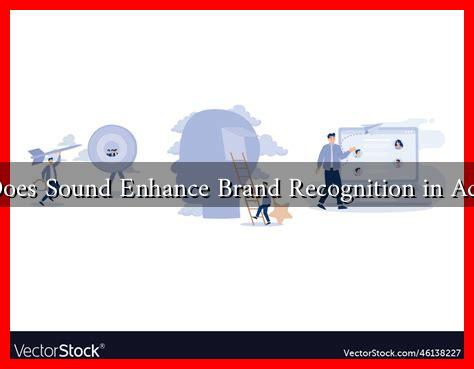-
Table of Contents
Does Sound Enhance Brand Recognition in Ads?
In the ever-evolving landscape of advertising, brands are constantly seeking innovative ways to capture consumer attention and foster brand loyalty. One often overlooked yet powerful element in advertising is sound. From jingles to voiceovers, sound plays a crucial role in shaping consumer perceptions and enhancing brand recognition. This article delves into the impact of sound in advertising, exploring how it influences brand recall and consumer behavior.
The Psychology of Sound in Advertising
Sound has a profound psychological effect on human emotions and cognition. Research indicates that auditory stimuli can evoke memories and feelings, making them a potent tool in advertising. Here are some key psychological principles that explain why sound enhances brand recognition:
- Emotional Resonance: Sounds can evoke emotions that resonate with consumers, creating a deeper connection with the brand.
- Memory Encoding: Auditory cues can aid in memory encoding, making it easier for consumers to recall a brand when they hear a specific sound.
- Associative Learning: Repeated exposure to a sound associated with a brand can lead to positive associations, enhancing brand loyalty.
Case Studies: The Power of Sound in Advertising
Several brands have successfully leveraged sound to enhance their advertising campaigns. Here are a few notable examples:
- McDonald’s “I’m Lovin’ It”: The catchy jingle has become synonymous with the brand, making it instantly recognizable. Research shows that jingles can increase brand recall by up to 30%.
- Intel’s Sonic Logo: The four-note audio signature has become a hallmark of the brand, reinforcing its identity and enhancing recognition across various media.
- Coca-Cola’s “Taste the Feeling”: The brand uses sound in its advertisements to evoke feelings of happiness and nostalgia, which strengthens emotional connections with consumers.
Statistics Supporting Sound’s Impact on Brand Recognition
Numerous studies have highlighted the effectiveness of sound in advertising. Here are some compelling statistics:
- According to a study by Nielsen, ads that incorporate music or sound effects are 23% more memorable than those without.
- A study published in the Journal of Advertising Research found that brands using sound logos experienced a 20% increase in brand recall compared to those that did not.
- Research from the University of Southern California revealed that consumers are 50% more likely to remember a brand when it is associated with a specific sound.
Types of Sound Elements in Advertising
Brands can utilize various sound elements to enhance their advertising efforts. Here are some common types:
- Jingles: Catchy tunes that stick in the consumer’s mind.
- Voiceovers: Narration that conveys brand messages effectively.
- Sound Effects: Auditory cues that enhance the visual experience.
- Background Music: Sets the tone and mood of the advertisement.
Challenges and Considerations
While sound can significantly enhance brand recognition, it is essential for brands to consider the following challenges:
- Over-Saturation: Excessive use of sound can lead to consumer fatigue and diminish its effectiveness.
- Cultural Sensitivity: Sounds may have different meanings across cultures, so brands must be cautious in their selection.
- Brand Consistency: Maintaining a consistent sound identity is crucial for long-term brand recognition.
Conclusion
In conclusion, sound is a powerful tool that can significantly enhance brand recognition in advertising. By leveraging the psychological effects of sound, brands can create emotional connections, improve memory recall, and foster loyalty among consumers. As demonstrated by successful case studies and supported by compelling statistics, the strategic use of sound elements can elevate advertising campaigns to new heights. Brands that recognize the importance of sound and integrate it thoughtfully into their marketing strategies will likely see improved brand recognition and consumer engagement.
For further reading on the impact of sound in advertising, you can explore resources from Nielsen and Journal of Advertising Research.

